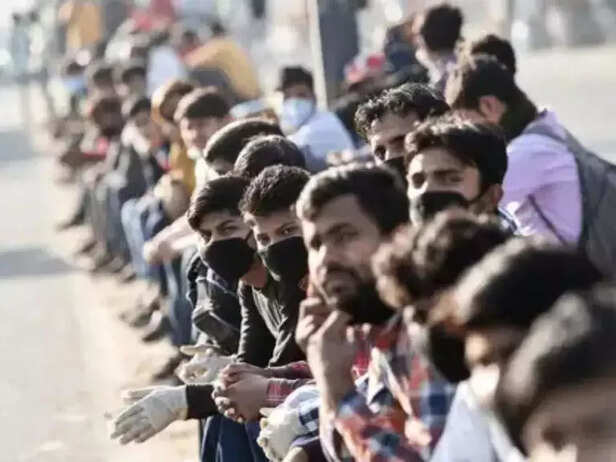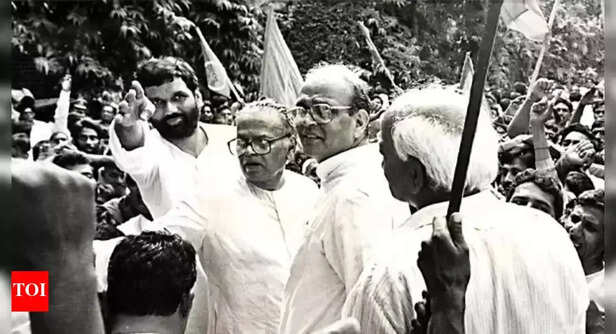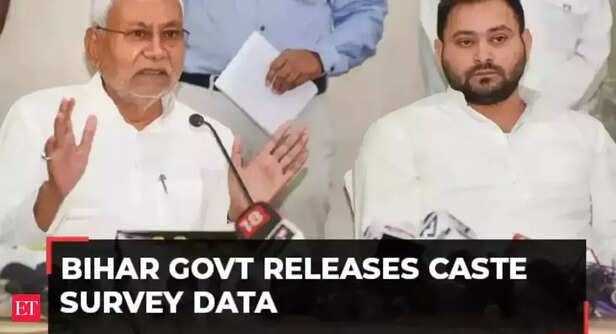Caste Census Being Ignored for Over 70 Years — Why Now? What Was Missed?
Nidhi | Apr 30, 2025, 21:43 IST

( Image credit : Times Life Bureau )
India hasn't conducted a full caste census in over 70 years, even though caste continues to shape access to education, jobs, and political power. Since 1951, only Scheduled Castes and Scheduled Tribes have been officially counted, leaving OBCs and other communities invisible in national policy planning. This article examines why caste enumeration was discontinued, the crucial data and equity insights that were missed, and why the push to revive it in 2025 could reshape India’s future. With rising demands for representation and social justice, the caste census is no longer just about numbers — it’s about accountability, inclusion, and power.
For a country where caste remains one of the most powerful markers of identity, privilege, and exclusion, India’s longstanding refusal to systematically collect comprehensive caste data in its national censuses is striking.
Since 1951 — the first census of independent India — caste enumeration has been limited to Scheduled Castes (SCs) and Scheduled Tribes (STs), with no official data collected on Other Backward Classes (OBCs) or other caste groups. This has resulted in a data vacuum spanning more than 70 years, despite caste continuing to profoundly shape access to education, employment, political representation, and welfare.
Now, with growing political consensus and renewed demands from states, activists, and civil society, India seems poised to revisit the idea of a caste census. The question is no longer whether caste matters — it clearly does — but whether ignoring it in data has helped or harmed efforts toward justice, representation, and equality. 


The renewed interest in a caste census isn’t just about ticking demographic boxes. It’s about acknowledging how caste still shapes access to power and opportunity in modern India — and using data to address these inequalities, not hide from them.
After nearly a century of silence, India stands at a crossroads. Ignoring caste hasn’t made it disappear; it has only made our policies blind to it. A caste census, if done sensitively and transparently, could be the first step toward making inequality visible — and eventually, solvable.
Explore the latest trends and tips in Health & Fitness, Travel, Life Hacks, Fashion & Beauty, and Relationships at Times Life!
Since 1951 — the first census of independent India — caste enumeration has been limited to Scheduled Castes (SCs) and Scheduled Tribes (STs), with no official data collected on Other Backward Classes (OBCs) or other caste groups. This has resulted in a data vacuum spanning more than 70 years, despite caste continuing to profoundly shape access to education, employment, political representation, and welfare.
Now, with growing political consensus and renewed demands from states, activists, and civil society, India seems poised to revisit the idea of a caste census. The question is no longer whether caste matters — it clearly does — but whether ignoring it in data has helped or harmed efforts toward justice, representation, and equality.
Why Was the Caste Census Stopped After 1931?

Casteism
( Image credit : Times Life Bureau )
- Colonial Context: Caste enumeration was a tool of control for the British. Starting from 1881, colonial authorities used caste to classify and govern the population, often reinforcing rigid identities for administrative convenience. The 1931 census was the last to count all castes.
- Post-Independence Vision: After independence, leaders like Jawaharlal Nehru believed that recording caste could entrench divisions in a fragile new democracy. The 1951 census, therefore, excluded caste except for SCs and STs, seen as constitutionally protected categories.
- The Unintended Consequence: While the goal was to move toward a casteless society, the result was the lack of reliable data for communities like the Other Backward Classes (OBCs), who were central to affirmative action debates in the decades to come.
What Changed in the 1980s and After?

VP Singh
( Image credit : Times Life Bureau )
- The Mandal Moment (1980–1990): The Mandal Commission recommended 27% reservation for OBCs in central government jobs, sparking both support and protests. But the absence of updated caste data made the implementation contentious, relying on 1931 figures to estimate OBC population — a statistic over half a century old at the time.
- Rise of Caste-Based Politics: In states like Bihar, Uttar Pradesh, and Tamil Nadu, caste identity became a basis for political mobilization and social assertion. Still, national policies lacked fresh data to support or refine these dynamics.
- SECC 2011 – The Lost Opportunity: The Socio-Economic and Caste Census conducted in 2011 was supposed to bridge this data gap. But the caste data was never officially published due to “errors and inconsistencies.” Critics argue that the refusal was more political than technical — an unwillingness to confront uncomfortable truths about inequality.
Why the Renewed Push for a Caste Census?

Bihar' Caste Survey Data
( Image credit : Times Life Bureau )
- State-Level Efforts: In the absence of central action, states took the lead. Bihar’s 2023 caste survey revealed that OBCs and Extremely Backward Classes form over 63% of its population — a figure far above earlier estimates. Karnataka and Telangana also undertook or announced similar exercises.
- Policy Blindness: Without up-to-date caste data, how do we ensure welfare benefits reach the right groups? Social justice policies — from scholarships to reservations — are being designed in the dark, often based on outdated or anecdotal numbers.
- Growing Demand for Equity: Activists and civil society argue that structural inequalities in education, health, and access to government schemes are deeply caste-based. Data is essential to identify and correct these patterns. As Poonam Muttreja of the Population Foundation of India notes, "Much of access to essential services... is shaped by structural inequalities of caste."
- Judicial and Political Momentum: Courts have increasingly asked for empirical backing to justify affirmative action. Meanwhile, political parties — particularly at the state level — are responding to growing calls for representation, transparency, and inclusion.
What Has Been Missed Over These 70 Years?
- Accurate Representation: We don’t know how many OBCs there really are in India today. Estimates range from 40% to over 50%, but no official figure exists.
- Equitable Distribution of Resources: Without data, policy cannot be targeted effectively. Are schemes meant for backward castes actually reaching them? Which communities are falling through the cracks?
- Intersectional Insights: Caste doesn’t operate in isolation. A modern caste census could show how caste overlaps with gender, region, income, and education — enabling more nuanced and equitable policymaking.
- Accountability in Governance: Decisions about reservation caps, caste-based scholarships, and welfare quotas are often made in a vacuum. Updated data would allow these decisions to be evidence-based, not purely political.
What Are the Concerns and Challenges?
- Fear of Division: Critics argue that caste enumeration could deepen social divides and fuel identity politics. Some believe it might entrench rather than dismantle caste hierarchies.
- Technical Difficulties: India has thousands of castes and sub-castes. How will they be classified? Will self-identification be enough? These are complex, unresolved questions.
- Political Calculations: The caste census could lead to demands for increased quotas, especially if OBCs are found to be underrepresented. This has electoral implications — which is why some governments are cautious or resistant.
So, Why Now?
After nearly a century of silence, India stands at a crossroads. Ignoring caste hasn’t made it disappear; it has only made our policies blind to it. A caste census, if done sensitively and transparently, could be the first step toward making inequality visible — and eventually, solvable.
Explore the latest trends and tips in Health & Fitness, Travel, Life Hacks, Fashion & Beauty, and Relationships at Times Life!
